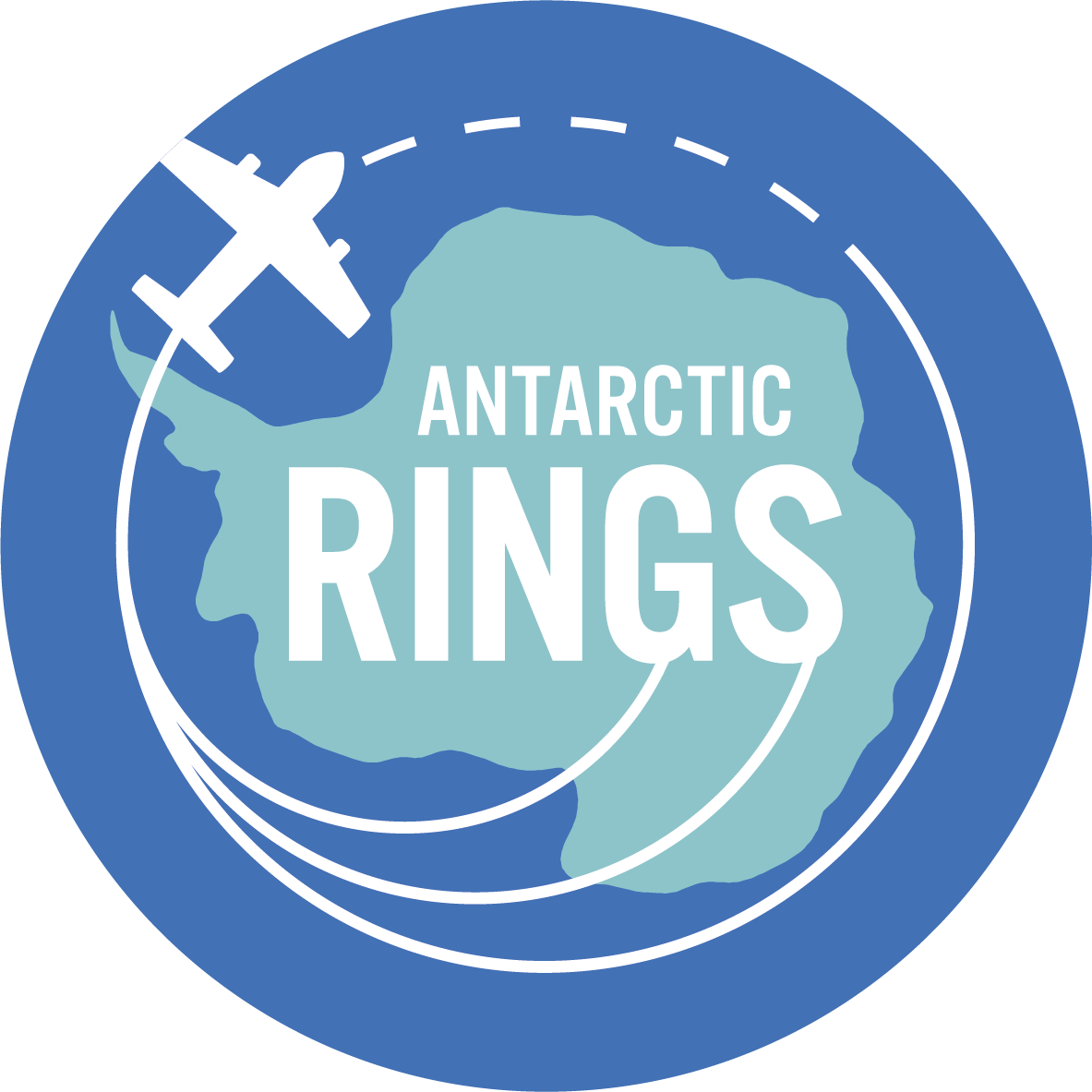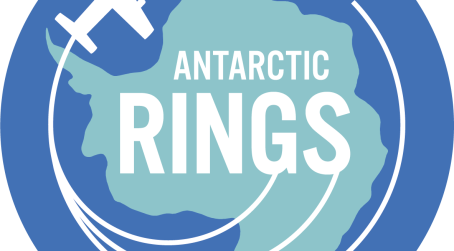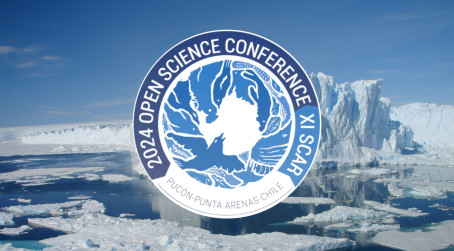| Name |
Affiliation |
Country |
| Songtao Ai |
Wuhan University |
China |
| Alan Aitken |
University of West Australia |
Australia |
| Richard Alley |
The Pennsylvania State University |
USA |
| Lu An |
Tongji University |
China |
| Jenny Arthur |
Norwegian Polar Institute |
Norway |
| Jonathan Bamber |
University of Bristol |
UK |
| Christine Batchelor |
Newcastle University |
UK |
| Lucas Beem |
Montana State University |
USA |
| Robin Bell |
Columbia University |
USA |
| Robert Bingham |
University of Edinburgh |
UK |
| Don Blankenship |
University of Texas |
USA |
| Julien Bodart |
University of Bern |
Switzerland |
| Matthias Braun |
FAU Erlangen-Nürnberg |
Germany |
| Sammie Buzzard |
Northumbria University |
UK |
| Rachel Carr |
Newcastle University |
UK |
| Charlotte Carter |
Alfred Wegener Institute |
Germany |
| Gino Casassa |
Insituto Antárctico Chileno |
Chile |
| Marie Cavitte |
Vrije Universiteit Brussel |
Belgium |
| Robb Clifton |
Australian Antarctic Division |
Australia |
| Renata Constantino |
University of São Paulo |
Brazil |
| Xiangbin Cui |
Polar Research Institute of China |
China |
| Bethan Davies |
Newcastle University |
UK |
| Harry Davis |
University of Edinburgh |
UK |
| Reinhard Drews |
University of Tübingen |
Germany |
| Jörg Ebbing |
Kiel University |
Germany |
| Olaf Eisen |
Alfred Wegener Institute |
Germany |
| Daniel Farinotti |
ETH Zurich & WSL Sion |
Switzerland |
| Fausto Ferraccioli |
Istituto Nazionale di Oceanografia e di Geofisica Sperimentale (INOGS) |
Italy |
| René Forsberg |
Technical University of Denmark |
Denmark |
| Bryony Freer |
Scripps Institution of Oceanography |
USA |
| Peter Fretwell |
British Antarctic Survey |
UK |
| Alex Gardner |
NASA Jet Propulsion Laboratory |
USA |
Vikram Goel
(APECS Representative) |
National Centre for Polar and Ocean Research |
India |
| Prasad Gogineni |
University of Alabama |
USA |
| Jamin Greenbaum |
University of California San Diego |
USA |
| Chad Greene |
NASA Jet Propulsion Laboratory |
USA |
| Tong Hao |
Tongji University |
China |
| Devin Harrison |
Kelpie Geoscience |
UK |
| Benjamin Hills |
Colorado School of Mines |
USA |
| Anna E. Hogg |
University of Leeds |
UK |
| Nick Holschuh |
Amherst College |
USA |
| Huw Horgan |
VAW-ETH Zurich |
Switzerland |
| Stewart Jamieson |
Durham University |
UK |
| Daniela Jansen |
Alfred Wegener Institute |
Germany |
| Hafeez Jeofry |
Universiti Malaysia Terengganu |
Malaysia |
| Lenneke Jong |
Australian Antarctic Division |
Australia |
| Tom Jordan |
British Antarctic Survey |
UK |
| Ala Khazendar |
Jet Propulsion Laboratory |
USA |
| Byeong-Hoon Kim |
Chonnam National University |
Korea |
| Naomi Krauzig |
Università Politecnica delle Marche |
Italy |
| Bernd Kulessa |
Swansea University |
UK |
| Choon-Ki Lee |
Korea Polar Research Institute |
Korea |
| Won Sang Lee |
Korea Polar Research Institute |
Korea |
| Gunter Leguy |
National Center for Atmospheric Research |
USA |
| Emmanuel Le Meur |
Institut des Géosciences de L’Environnement, Université Grenoble Alpes |
France |
| Adriano Lemos |
Finnish Meteorological Institute |
Finland |
| Carl Leuschen |
University of Kansas |
USA |
| Lu Li |
Commonwealth Scientific and Industrial Research Organisation (CSIRO) |
Australia |
| Jonas Liebsch |
Kiel University |
Germany |
| Katrin Lindback |
Norwegian Polar Institute |
Norway |
| Yan Liu |
Beijing Normal University |
China |
| Mareen Lösing |
Kiel University |
Germany |
| Maximilian Lowe |
Kiel University |
Germany |
| Joe MacGregor |
NASA |
USA |
| Sebastián Marinsek |
Instituto Antárctico Argentino |
Argentina |
| Kenichi Matsuoka |
Norwegian Polar Institute |
Norway |
| Felicity McCormack |
Monash University |
Australia |
| Helen Millman |
University of Exeter |
UK |
| Masahiro Minowa |
Hokkaido University |
Japan |
| Geir Moholdt |
Norwegian Polar Institute |
Norway |
| Mathieu Morlighem |
Dartmouth College |
USA |
| Thomas Nagler |
ENVEO IT GmbH |
Austria |
| Felipe Napoleoni |
University of Edinburgh |
UK |
| Francisco Navarro |
Universidad Politécnica de Madrid |
Spain |
| Mayuri Pandey |
Banaras Hindu University |
India |
| Frank Pattyn |
Université Libre de Bruxelles |
Belgium |
| Guy Paxman |
Durham University |
UK |
| Sergey Popov |
Saint Peterburg State University |
Russia |
| Gang Qiao |
Tongji University |
China |
| Wolfgang Rack |
University of Canterbury |
New Zealand |
| Yogesh Ray |
National Centre for Polar and Ocean Research |
India |
| Eric Rignot |
University of California, Irvine |
USA |
| Catherine Ritz |
Université Grenoble Alpes |
France |
| Jason Roberts |
Australian Antarctic Division |
Australia |
| Neil Ross |
Newcastle University |
UK |
| Antonia Ruppel |
Federal Institute for Geosciences and Natural Resources |
Germany |
| Becky Sanderson |
Newcastle University |
UK |
| Mirko Scheinert |
Technische Universität Dresden |
Germany |
| Rebecca Schlegel |
University of Tübingen |
Germany |
| Dustin Schroeder |
Stanford University |
USA |
| Thorsten Seehaus |
FAU Erlangen-Nürnberg |
Germany |
| Kaian Shahateet |
Centre National de la Recherche Scientifique (CNRS) |
France |
| Calvin Shackleton |
Norwegian Polar Institute |
Norway |
| Andrew Shepherd |
University of Leeds |
UK |
| Martin Siegert |
University of Exeter |
UK |
| Matthew Siegfried |
Colorado School of Mines |
USA |
| Alessandro Silvano |
University of Southampton |
UK |
| Sebastian Skatulla |
University of Cape Town |
South Africa |
| Tobias Staal |
University of Tasmania |
Australia |
| Daniel Steinhage |
Alfred Wegener Institute |
Germany |
| Arjen Stroeven |
Stockholm University |
Sweden |
| Michael Studinger |
NASA |
USA |
| Bo Sun |
Polar Research Institute of China |
China |
| Xueyuan Tang |
Polar Research Institute of China |
China |
| Matthew Tankersley |
Lamont-Doherty Earth Observatory, Columbia University |
USA |
| Drew Taylor |
University of Alabama |
USA |
| Thomas Teisberg |
Astera Institute |
USA |
| Kirsty Tinto |
Lamont-Doherty Earth Observatory, Columbia University |
USA |
| Jelte van Oostveen |
Norwegian Research Centre (NORCE) |
Norway |
| Ryan Venturelli |
Colorado School of Mines |
USA |
| Benjamin J. Wallis |
University of Leeds |
UK |
| Douglas Wiens |
Washington University |
USA |
| Christian Wild |
University of Tübingen |
Germany |
| Paul Winberry |
Central Washington University |
USA |
| Kate Winter |
Northumbria University |
UK |
| Jan Wuite |
ENVEO IT GmbH |
Austria |
| Junjun Yang |
China Aero Geophysical Survey and Remote Sensing Center for Natural Resources, China Geological Survey |
China |
| Duncan Young |
University of Texas |
USA |
| Madeleine Youngs |
University of Maryland |
USA |
| Rodrigo Zamora |
Centro de Estudios Cientificos (CECs) |
Chile |
| Chen Zhao |
University of Tasmania |
Australia |
| Alexandra Zuhr |
University of Tübingen |
Germany |
 Regions where the Antarctic Ice Sheet reaches the coast are fundamental to our understanding of the linkages between Antarctica and the global climate system. Knowledge of bed topography at the ice-sheet margin is critical for accurate estimates of current Antarctic ice discharge, while bathymetry under ice shelves, bed topography along major outlet glaciers, and geology and subglacial hydrology near the coast are critical factors for predicting the future of the Antarctic Ice Sheet. None of these fundamental boundary conditions is adequately constrained by observations along the 62,000-km long margin of the Antarctic Ice Sheet.
Regions where the Antarctic Ice Sheet reaches the coast are fundamental to our understanding of the linkages between Antarctica and the global climate system. Knowledge of bed topography at the ice-sheet margin is critical for accurate estimates of current Antarctic ice discharge, while bathymetry under ice shelves, bed topography along major outlet glaciers, and geology and subglacial hydrology near the coast are critical factors for predicting the future of the Antarctic Ice Sheet. None of these fundamental boundary conditions is adequately constrained by observations along the 62,000-km long margin of the Antarctic Ice Sheet.


